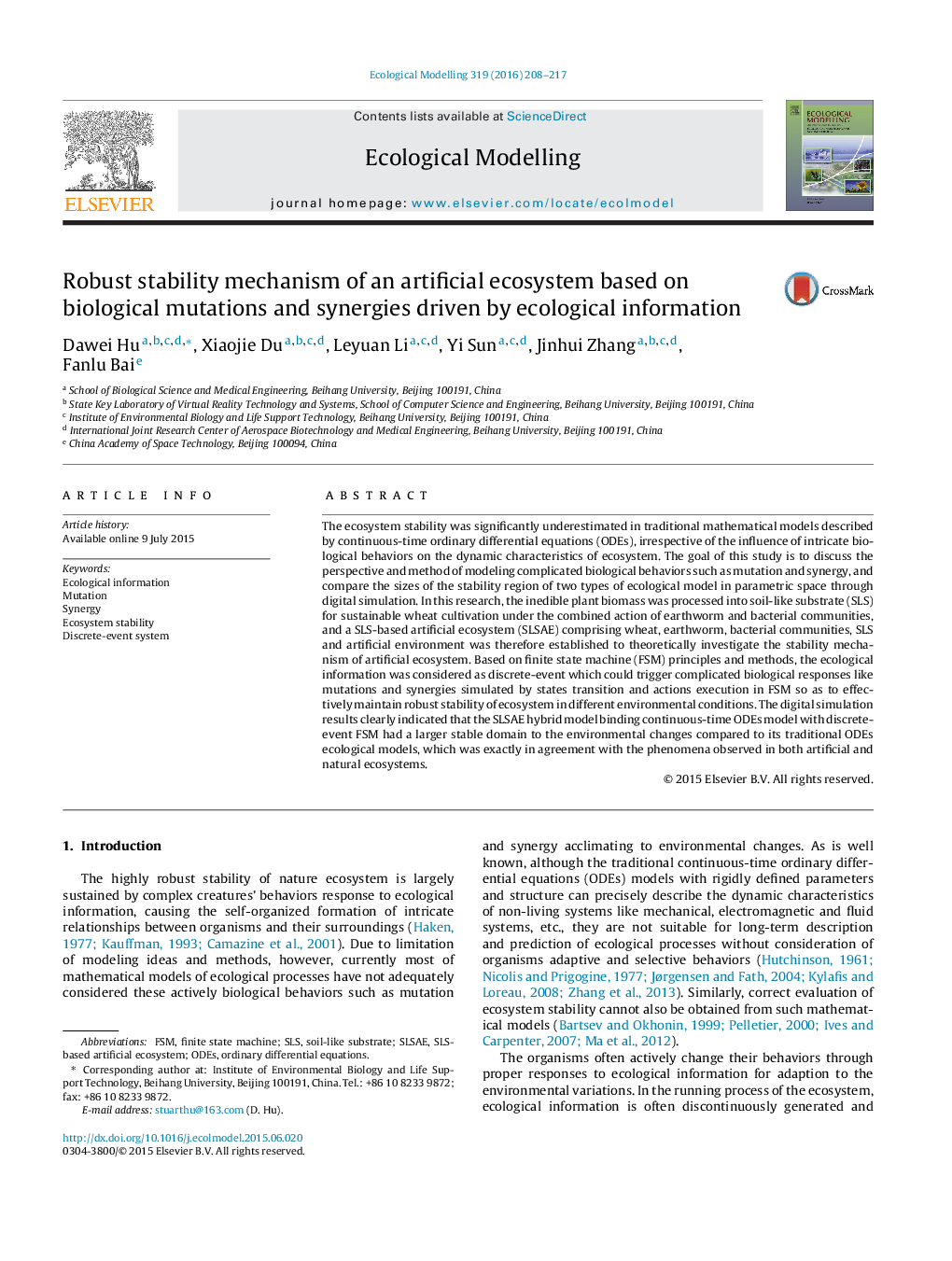| کد مقاله | کد نشریه | سال انتشار | مقاله انگلیسی | نسخه تمام متن |
|---|---|---|---|---|
| 4375623 | 1617428 | 2016 | 10 صفحه PDF | دانلود رایگان |
• Bio-behaviors were modeled by discrete-event finite state machine (FSM) methods.
• Ecological information regarded as discrete event changes ecosystem operating mode.
• Robust ecosystem stability was resulted from complicated biological behaviors.
• Biological mutation and synergy driven by eco-information were modeled by FSM.
• Hybrid ecosystem model combining ODEs with FSM has more validity.
The ecosystem stability was significantly underestimated in traditional mathematical models described by continuous-time ordinary differential equations (ODEs), irrespective of the influence of intricate biological behaviors on the dynamic characteristics of ecosystem. The goal of this study is to discuss the perspective and method of modeling complicated biological behaviors such as mutation and synergy, and compare the sizes of the stability region of two types of ecological model in parametric space through digital simulation. In this research, the inedible plant biomass was processed into soil-like substrate (SLS) for sustainable wheat cultivation under the combined action of earthworm and bacterial communities, and a SLS-based artificial ecosystem (SLSAE) comprising wheat, earthworm, bacterial communities, SLS and artificial environment was therefore established to theoretically investigate the stability mechanism of artificial ecosystem. Based on finite state machine (FSM) principles and methods, the ecological information was considered as discrete-event which could trigger complicated biological responses like mutations and synergies simulated by states transition and actions execution in FSM so as to effectively maintain robust stability of ecosystem in different environmental conditions. The digital simulation results clearly indicated that the SLSAE hybrid model binding continuous-time ODEs model with discrete-event FSM had a larger stable domain to the environmental changes compared to its traditional ODEs ecological models, which was exactly in agreement with the phenomena observed in both artificial and natural ecosystems.
Journal: Ecological Modelling - Volume 319, 10 January 2016, Pages 208–217
